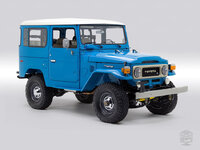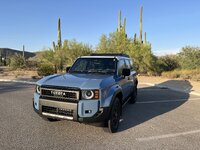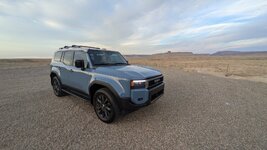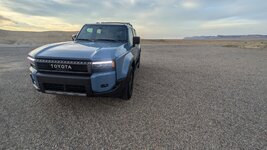First, yes, that's a pretty good photo, much closer to reality. (I've been battling this problem for a decade with my FJ!) And I've got the 2 bike version of that rack!The iPhone 15 Pro has a 1/1.28" sensor, which is not that far behind compact mirrorless cameras with 1" and micro 4/3 sensors. It's definitely not collecting junk. I'm a photography enthusiast, and every year I use my "real" camera less and less. Optical quality + the processing is getting really fantastic. I sometimes wish i could somehow use my real camera but with the iPhone for processing.
To stay on topic for the thread - here's a full 48MP shot of my heritage blue from this morning at the trailhead. This color representation is pretty close to accurate to my eyes, maybe slightly saturated. I think it's also important to remember that phones have a lot of settings, someone might turn on an over-saturated filter and then leave it on without ever thinking about it again.
Feel free to pixel peep! I don't use the default pixel binning in daylight, so this is the full 48MP resolution... if the forum uploads the full resolution image, that is.
EDIT - nope, the upload got downsized. sorry!
View attachment 4634
As for cameras, I design scientific cameras for a living, as a result I have unrealistic standards (for consumer cameras)! The smallest pixels I've worked with are 5 micron, 9-15 microns is more typical, with sensor sizes up to the size of a bathroom tile. That iPhone sensor has 1.44 micron pixels, less than a 10th the collecting area of even a 5 um pixel. The resulting photos from the iPhone are fantastic. The amount of data processing needed to get those photos is staggering. Increased computer power has made a lot of things possible.






